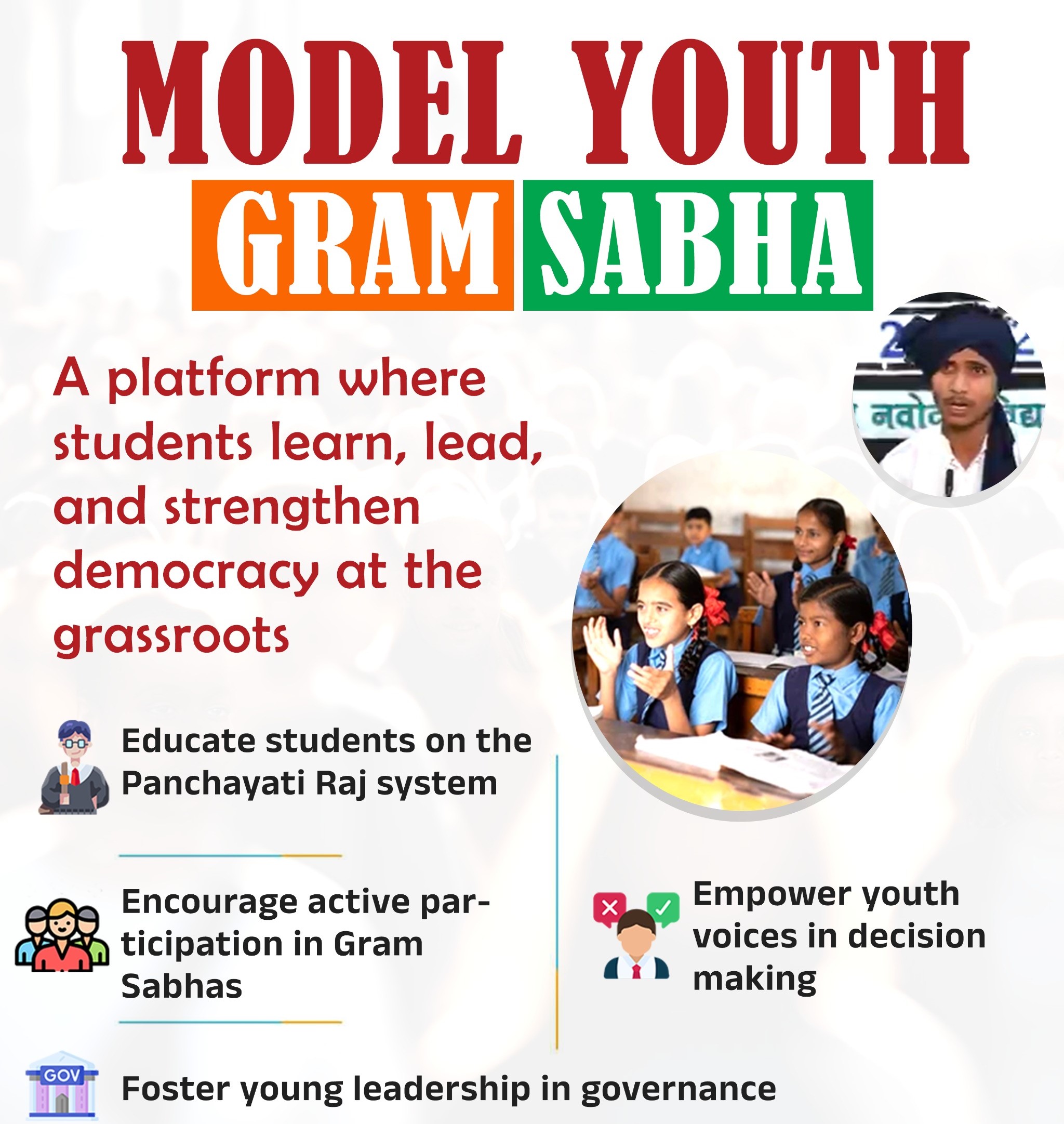Context:
The Union Government has decided to roll out the Model Youth Gram Sabha (MYGS) initiative in schools across the country starting October 2025, to nurture democratic skills and civic consciousness among youth.
About Model Youth Gram Sabha:
The Model Youth Gram Sabha (MYGS) is a national-level educational initiative launched by the Ministry of Panchayati Raj, in collaboration with the Ministries of Education and Tribal Affairs, to promote grassroots democratic awareness among school students.
· Inspired by the success of the Model United Nations (Model UN), this programme aims to replicate the functioning of a Gram Sabha, the cornerstone of India's Panchayati Raj system, in schools across the country.
· Through this initiative, students from classes 9 to 12 will take on the roles of village-level leaders and officials such as the Sarpanch, Ward Members, Village Secretary, Anganwadi Worker, Nurse, and Engineer, among others.
Purpose and Objectives:
· To provide practical exposure to the Panchayati Raj system
· To nurture a new generation of responsible, participative citizens
· To strengthen students' leadership, communication, and problem-solving skills
· To inspire youth to actively engage in local development and planning
How It Works:
· Students conduct a mock Gram Sabha within the school
· They discuss village issues, create budgets, and draft development plans
· Resolutions are passed through debate, consensus, or voting — just like a real village assembly
Implementation Plan & Phases:
-
- In the first phase, MYGS will be launched in over 600 Jawahar Navodaya Vidyalayas (JNVs) and 200 Eklavya Model Residential Schools (EMRSs).
- Also, selected Zilla Parishad (district-level rural) schools in Maharashtra and Karnataka will be included in the pilot roll‑out.
- For each participating school, the Panchayati Raj ministry will grant ₹20,000 to support the conduct of the mock Gram Sabha.
- Two teachers from each school are being trained in advance to guide the exercise.
- After the school-level mock Gram Sabhas, regional and national level competitions will be held for JNVs and EMRSs.
- Prize money is substantial: the winning school in each category may get ₹1 crore, runner‑up ₹75 lakh, and third place ₹50 lakh.
- In the first phase, MYGS will be launched in over 600 Jawahar Navodaya Vidyalayas (JNVs) and 200 Eklavya Model Residential Schools (EMRSs).
Constitutional Provisions of gramsabha:
The 73rd Constitutional Amendment Act, 1992 added Part IX (Articles 243–243O) to the Indian Constitution, establishing the Gram Sabha as a permanent body of village-level voters and mandating the creation of Panchayats at village, intermediate, and district levels.
· It defines their composition, powers, term (5 years), and ensures reservations for SCs, STs, women, and optionally, Backward Classes.
· States can assign Panchayats powers for self-governance (Article 243G) and allow them to raise funds (Article 243H).
· A State Finance Commission (Article 243I) reviews their finances. The Eleventh Schedule lists 29 subjects under Panchayats’ jurisdiction.
Conclusion:
While students study Panchayati Raj in their textbooks, MYGS gives them a real-life simulation of how democracy functions at the grassroots. It’s a powerful step toward building a generation that values transparency, accountability, and inclusive governance.







